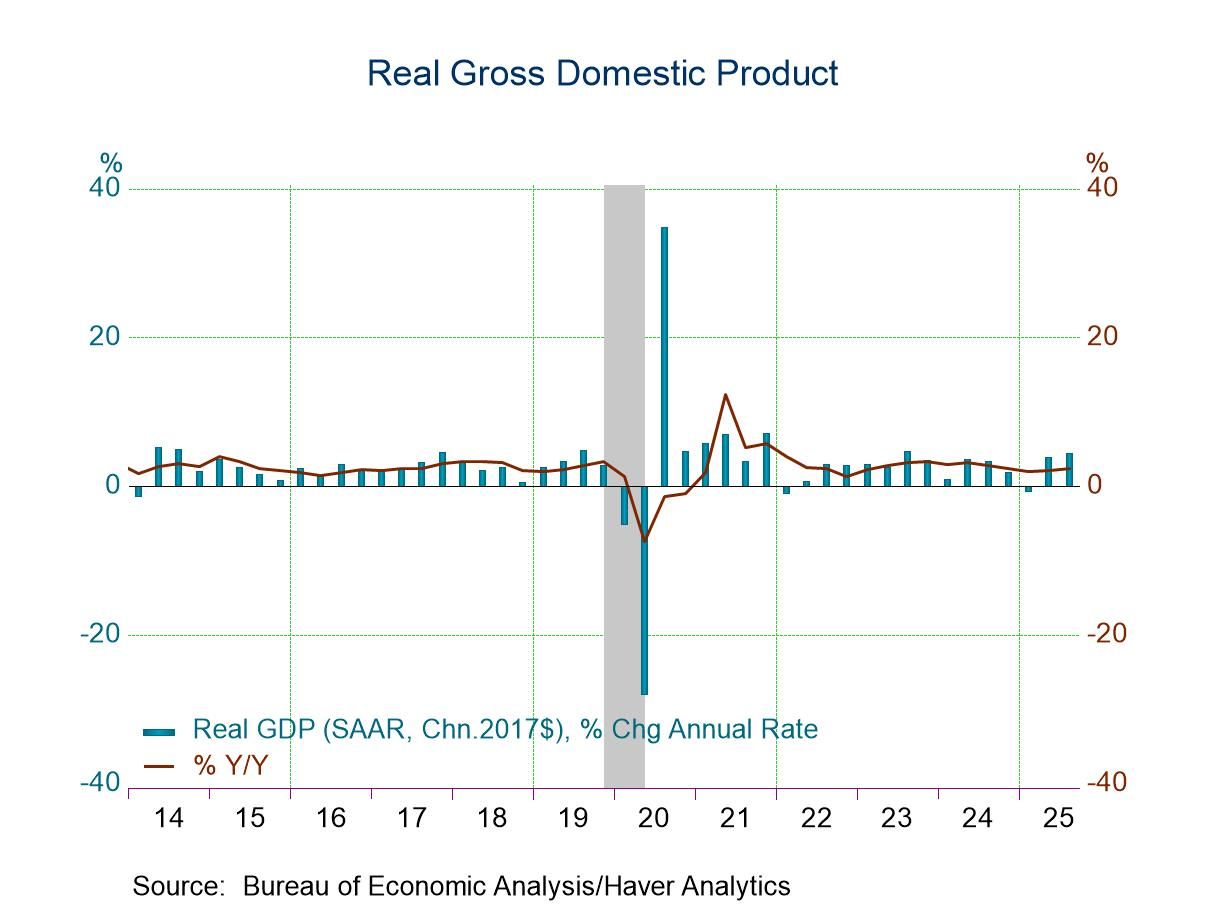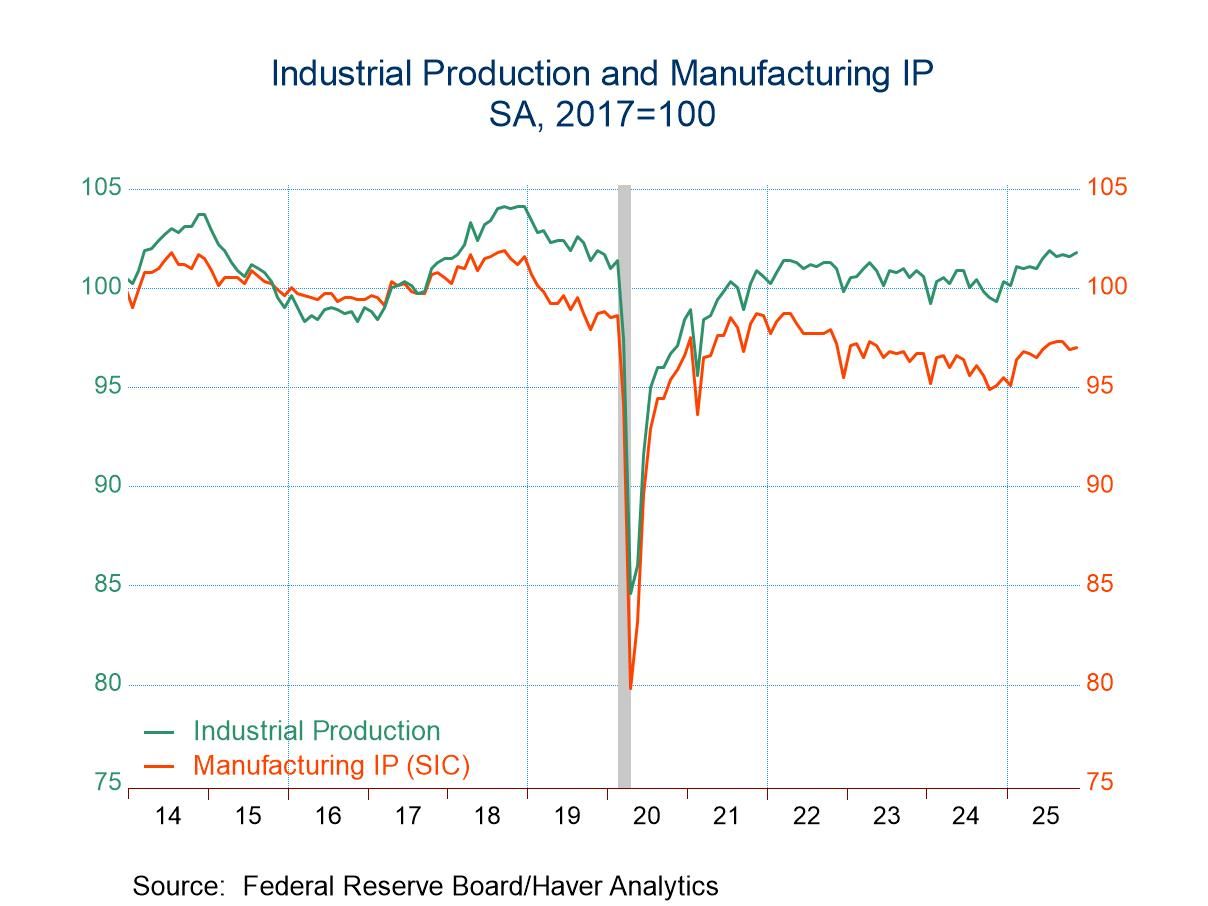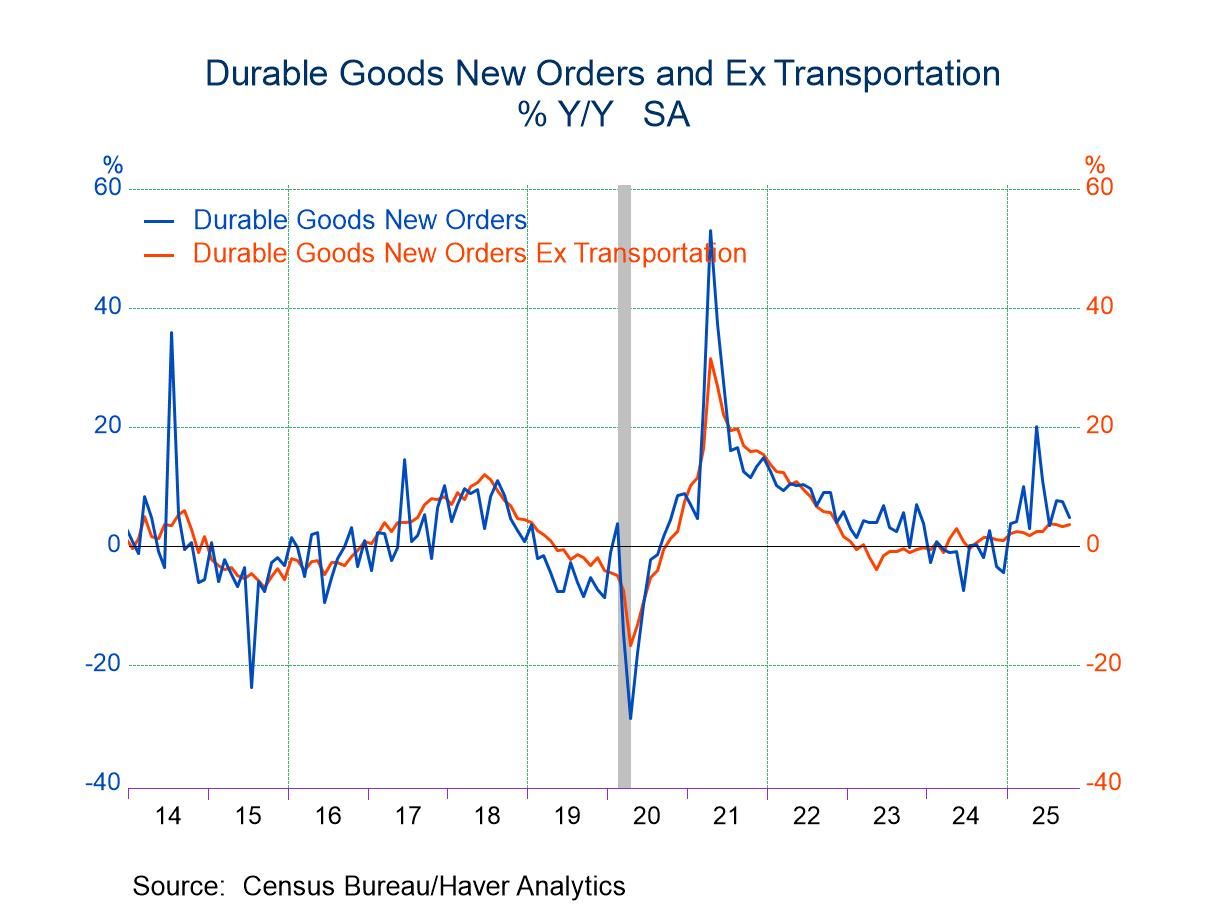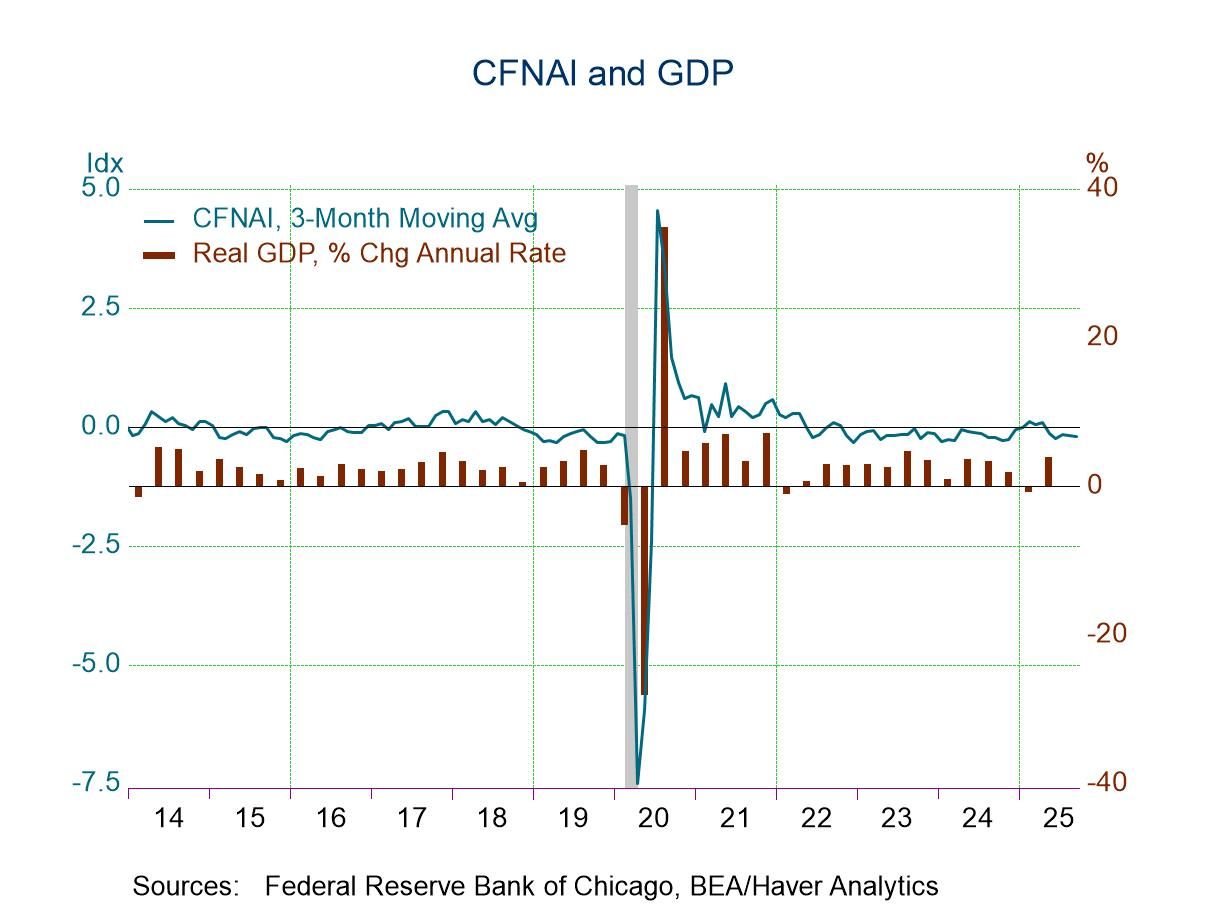 Global| Jun 01 2018
Global| Jun 01 2018U.S. Payroll & Earnings Growth Improve; Jobless Rate Declines
by:Tom Moeller
|in:Economy in Brief
Summary
The labor market data are contained in Haver's USECON database. Detailed figures are in the EMPL and LABOR databases. The expectations figures are in the AS1REPNA database. Employment: (SA, M/M Change, 000s) May Apr Mar May Y/Y 2017 [...]
The job market exhibited buoyancy during May. Nonfarm payrolls increased 223,000 following a 159,000 April rise and a 155,000 March increase. Together, payrolls during these two months were revised up 15,000. A 185,000 rise in employment was expected in the Action Economics Forecast Survey. Signs of job market improvement extended to a 0.3% increase (2.7% y/y) in average hourly earnings which followed an unrevised 0.1% uptick. It was the largest gain since January. A 0.2% rise had been expected.
The unemployment rate fell to 3.8%, the lowest level since April 2000. Expectations had been for 3.9%. The total unemployment rate, including marginally attached and working part time for economic reasons fell to 7.6%, equaling its 2001 low.
The labor market data are contained in Haver's USECON database. Detailed figures are in the EMPL and LABOR databases. The expectations figures are in the AS1REPNA database.
| Employment: (SA, M/M Change, 000s) | May | Apr | Mar | May Y/Y | 2017 | 2016 | 2015 |
|---|---|---|---|---|---|---|---|
| Payroll Employment | 223 | 159 | 155 | 1.6% | 1.6% | 1.8% | 2.1% |
| Previous Estimate | -- | 164 | 135 | -- | -- | -- | -- |
| Manufacturing | 18 | 25 | 21 | 2.1 | 0.7 | 0.1 | 1.2 |
| Construction | 25 | 21 | -3 | 4.2 | 2.4 | 4.1 | 5.0 |
| Private Service-Producing | 171 | 109 | 127 | 1.7 | 1.8 | 2.2 | 2.4 |
| Government | 5 | -3 | 2 | 0.0 | 0.4 | 0.9 | 0.7 |
| Average Weekly Hours - Private Sector | 34.5 | 34.5 | 34.5 | 34.4 | 34.4 | 34.4 | 34.5 |
| Private Sector Average Hourly Earnings (%) | 0.3 | 0.1 | 0.2 | 2.7 | 2.5 | 2.6 | 2.3 |
| Unemployment Rate (%) | 3.8 | 3.9 | 4.1 | 4.3 | 4.4 | 4.9 | 5.3 |
U.S. Light Vehicle Sales Falter
by Tom Moeller June 1, 2018
Total sales of light vehicles declined 1.9% during April (+0.6% y/y) to 17.15 million units (SAAR), following a 2.4% March rise, according to the Autodata Corporation. The decline placed sales 7.6% below the 18.57 million unit high reached last September. April sales have declined 4.0% since December, following a 1.7% twelve-month shortfall during 2017.
Leading last month's decline was a 3.4% drop (-16.4% y/y) in passenger car sales to 5.42 million units. Sales of domestically made autos eased 5.0% (-17.5% y/y) to 3.90 million units, the lowest level since November 2010. Sales of imported passenger cars improved 0.9% (-13.3% y/y) to 1.53 million units.
Sales of light trucks declined 1.2% (+11.0% y/y) to 11.72 million units. Domestic light truck sales eased 3.8% (+6.9% y/y) to 9.28 million units. Sales of imported light trucks increased 9.9% (30.1% y/y) to 2.45 million units.
Trucks' share of the U.S. vehicle market rose to 68.4% in April, up from 63.2% during all of last year and 48.8% during all of 2008.
Imports' share of the U.S. vehicle market surged to 23.2% last month, up from 19.9% in 2015. Imports' share of the passenger car market increased to 28.2% from 27.7% last year. Imports share of the light truck market surged to 20.9% versus 12.7% low during 2014.
U.S. vehicle sales figures can be found in Haver's USECON database.
| Light Weight Vehicle Sales (SAAR, Million Units) | May | Apr | Mar | May Y/Y % | 2017 | 2016 | 2015 |
|---|---|---|---|---|---|---|---|
| Total | 17.15 | 17.48 | 0.6 | 17.27 | 17.55 | 17.48 | |
| Autos | 5.42 | 5.62 | -16.4 | 6.35 | 7.10 | 7.73 | |
| Domestic | 3.90 | 4.10 | -17.5 | 4.59 | 5.20 | 5.63 | |
| Imported | 1.53 | 1.51 | -13.3 | 1.76 | 1.90 | 2.10 | |
| Light Trucks | 11.72 | 11.87 | 11.0 | 10.92 | 10.44 | 9.74 | |
| Domestic | 9.28 | 9.64 | 6.9 | 9.02 | 8.75 | 8.37 | |
| Imported | 2.45 | 2.23 | 30.1 | 1.90 | 1.69 | 1.38 |
Tom Moeller
AuthorMore in Author Profile »Prior to joining Haver Analytics in 2000, Mr. Moeller worked as the Economist at Chancellor Capital Management from 1985 to 1999. There, he developed comprehensive economic forecasts and interpreted economic data for equity and fixed income portfolio managers. Also at Chancellor, Mr. Moeller worked as an equity analyst and was responsible for researching and rating companies in the economically sensitive automobile and housing industries for investment in Chancellor’s equity portfolio. Prior to joining Chancellor, Mr. Moeller was an Economist at Citibank from 1979 to 1984. He also analyzed pricing behavior in the metals industry for the Council on Wage and Price Stability in Washington, D.C. In 1999, Mr. Moeller received the award for most accurate forecast from the Forecasters' Club of New York. From 1990 to 1992 he was President of the New York Association for Business Economists. Mr. Moeller earned an M.B.A. in Finance from Fordham University, where he graduated in 1987. He holds a Bachelor of Arts in Economics from George Washington University.






